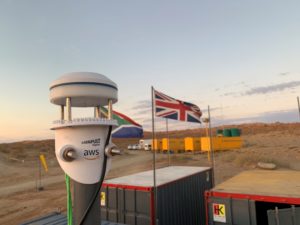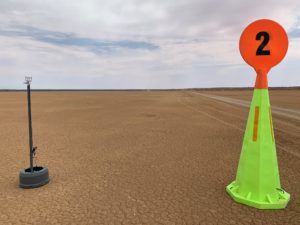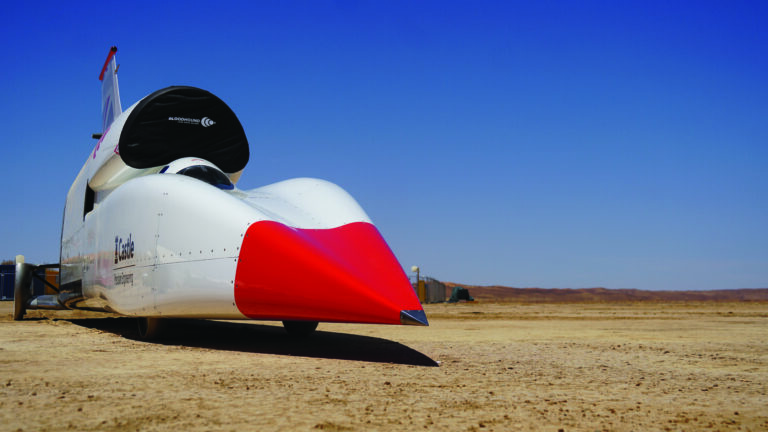In late October 2019, the Bloodhound Land Speed Record (LSR) team revealed the car aiming to break the world land speed record. The team is currently testing the Bloodhound car in the Kalahari Desert, Northern Cape, South Africa.
The vehicle has been developed to travel at supersonic speeds, with the end goal being to match or exceed 1,000mph (1,600km/h). ThrustSSC holds the land speed record at 760mph (1,223km/h), set on October 15, 1997.
On November 6, the Bloodhound car had reached 501mph (806km/h) in 12 seconds, securing its place amongst the top 10 fastest cars in the world. The team is now preparing for the next challenge, 550mph (885km/h), which they aim to hit in the next few days.
To enable the testing to go ahead in the desert, the Northern Cape Provincial Government and members of the local Mier community had to remove 16,500 tons of rock from 22,000,000m2 (8.5 sq. miles) of dry lakebed to ensure the car could run smoothly and safely. It’s the largest area of land ever cleared by hand for a motorsport event.
 Another key feature of the testing program is the use of remote microclimate weather stations connected through a low-power wide area network (LPWAN). There are 17 stations at 1km (0.6-mile) intervals down the test track. The battery-powered devices transmit data to the Bloodhound team every three minutes.
Another key feature of the testing program is the use of remote microclimate weather stations connected through a low-power wide area network (LPWAN). There are 17 stations at 1km (0.6-mile) intervals down the test track. The battery-powered devices transmit data to the Bloodhound team every three minutes.
Talking about his involvement, Peter Karney, head of product innovation at Digital Catapult, the UK’s leading advanced digital technology innovation center, said, “We have built the IoT platform that takes data from the sensors. The platform turns the data into information that can be used to understand the climatic conditions that would impact the performance of a high-speed car. We have also supplied the LPWAN.
“The weather sensors have been supplied by Decent Labs – measuring wind speed, gust speed, direction and temperature – and Sagemcom – measuring temperature, humidity and pressure. We supplied the sensors, with the end-to-end solution and analytics dashboard, to the Bloodhound LSR team,” Karney adds.
 As the stations send back data over a wireless network, they can be sited anywhere and still operate, which is crucial in a desert with very little infrastructure. The sensors and meteorological data generated are vital in keeping driver Andy Green and the Bloodhound car safe. Crosswinds in particular will affect the stability of the car at such high speeds.
As the stations send back data over a wireless network, they can be sited anywhere and still operate, which is crucial in a desert with very little infrastructure. The sensors and meteorological data generated are vital in keeping driver Andy Green and the Bloodhound car safe. Crosswinds in particular will affect the stability of the car at such high speeds.
Karney adds, “At the speeds hoped for, unexpected crosswind could significantly affect the stability and direction of the vehicle and are therefore a key decision point on when to run the car. We will be measuring and storing accurate data at 1km points along the track and therefore this info can be used by the team to plan the run.”
According to Karney, the weather stations have performed outstandingly since testing began. “The stations all came online as soon as the LPWAN base stations came online. Code developed by Digital Catapult enables the sensors, when out of coverage, to store up to 14 days’ worth of data,” he adds.



